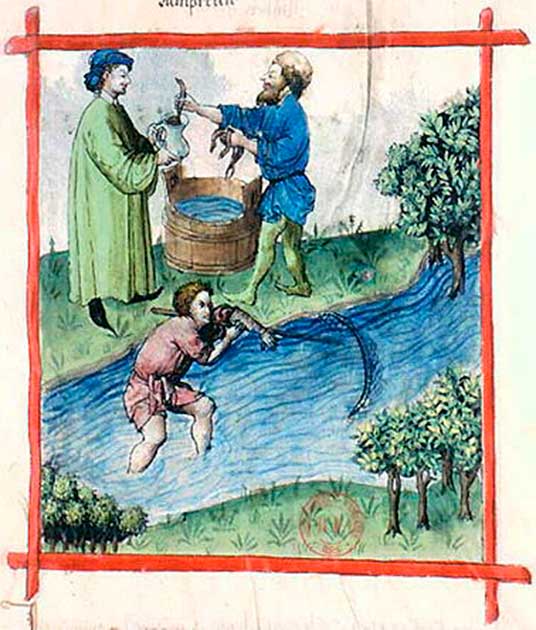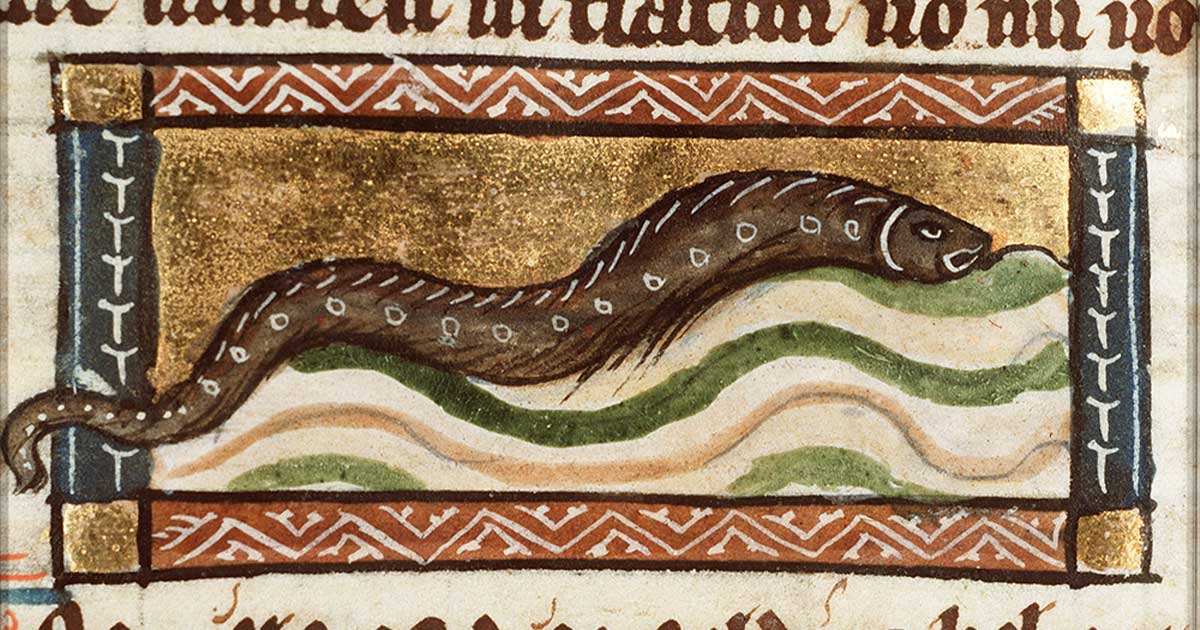Eels Were Used to Pay the Rent in the Middle Ages!
Before coinage became common, people in medieval England would pay their rent using an array of everyday items. Amongst these was the remarkably unattractive, and underappreciated, wormlike eel!
Few are aware that eels are vital to healthy ecosystems. They are also particularly fragile due to their complex migration and reproduction patterns, which remained a mystery up until recently. Modern research posits that European eels probably begin their lives in the Saragasso Sea, after which their larvae migrate towards Europe to enter estuaries and migrate upstream. Once sexually mature, they then migrate back to the ocean to spawn.
Omnipresent during the Middle Ages, eels were found in abundance all over England, living in oceans, rivers and marshes. Though migratory eels are now an endangered species, due to overfishing, industrialization and pollution, they have found an unlikely ally in a medievalist who has successfully piqued interest via his Twitter account, Surprised Eel Historian. “They’re not cute, cuddly or majestic so it’s difficult to get people interested in saving them,” explained John Wyatt Greenlee in Time when discussing his platform.

Illustration from an edition of the 15th century Tacuinum Sanitatis depicting medieval eel fishing and exchange. (Public domain)
Eel was a valuable commodity in medieval England, consumed in enormous quantities in anything from eel pie to eel flan. Some reports even describe a trick used in the horse trade, whereby live eels were employed to rouse older horses by providing anal excitement!
Eels were also used as currency. Caught in autumn as they migrated back to the ocean, when salted, smoked or dried the snake-like fish could last for months. People would group eels together on sticks to be smoked, exchanged and easily transported: 25 were referred to as a “stick,” while a bundle of ten was known as a “bind.”
So you're a medieval landlord, collecting property rent from your peasants in eels. How do you measure them?
Eels were usually counted in units called sticks (25 eels) -- likely from the number of eels you can smoke on a stick at one time. 10 sticks of eels was called a bind. pic.twitter.com/ONoNaao75J
— Surprised Eel Historian, PhD (@greenleejw) December 11, 2019
Commissioned by William the Conqueror in 1085 to assess the assets of his subjects, the Doomsday Book provides evidence of the use of eels as currency. In the Eel-Rents Project, Greenlee gives several examples, including that of monks in Huntingdonshire who exchanged 4,000 eels for access to limestone quarries. In Lincolnshire, one village paid Earl Hugh of Chester 75,000 eels per year in rent.
Keep in mind that many landlords were monasteries, at a time when observing Lent, a Christian 40-day period of fasting and abstinence, was at its height. Meat and carnal desires were prohibited, making eels, believed to be asexual before their migratory nature was fully understood, a perfect dietary supplement in popular demand each spring.
The use of eel rents declined over time, but they did continue into the 15th century and beyond. Remnants of their popularity still remain. According to Greenlee, medieval eel rents were so important in some families, that the slithery creatures were featured in their family crests!
Top image: Eel depicted in a medieval manuscript. Source: Public domain
By Cecilia Bogaard




















Comments
How can one claim the fuedal system, encouraged by end result of the evil (yet karmic) usurpation of the son of Mans birthright by the pharasees could be anything but evil itself when the masses were ig irant and filthy and the rich unhealthy in their own way... Ignorance is not bliss... Its tragic
infinitesimal waveparticles comprise what we call home the earth
manipulatable by thought ability supressed in humans since birth